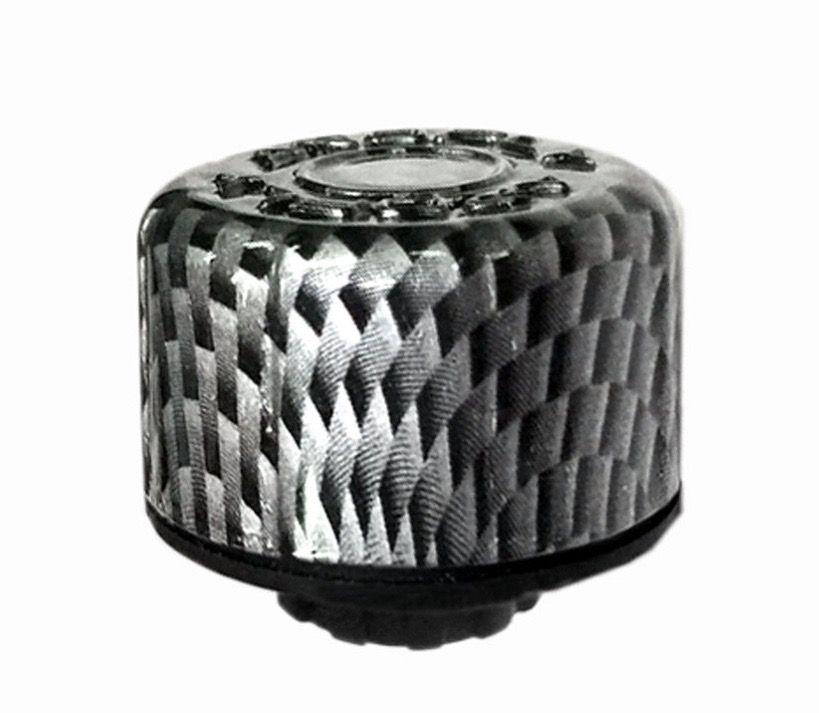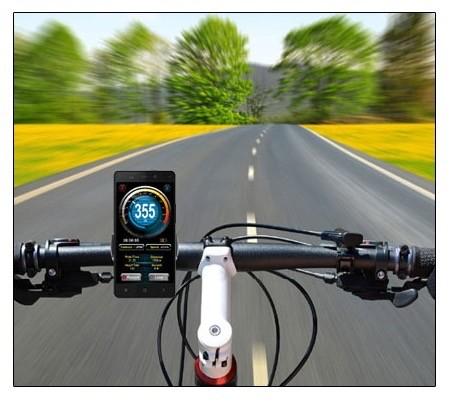- News
- Reviews
- Bikes
- Accessories
- Accessories - misc
- Computer mounts
- Bags
- Bar ends
- Bike bags & cases
- Bottle cages
- Bottles
- Cameras
- Car racks
- Child seats
- Computers
- Glasses
- GPS units
- Helmets
- Lights - front
- Lights - rear
- Lights - sets
- Locks
- Mirrors
- Mudguards
- Racks
- Pumps & CO2 inflators
- Puncture kits
- Reflectives
- Smart watches
- Stands and racks
- Trailers
- Clothing
- Components
- Bar tape & grips
- Bottom brackets
- Brake & gear cables
- Brake & STI levers
- Brake pads & spares
- Brakes
- Cassettes & freewheels
- Chains
- Chainsets & chainrings
- Derailleurs - front
- Derailleurs - rear
- Forks
- Gear levers & shifters
- Groupsets
- Handlebars & extensions
- Headsets
- Hubs
- Inner tubes
- Pedals
- Quick releases & skewers
- Saddles
- Seatposts
- Stems
- Wheels
- Tyres
- Health, fitness and nutrition
- Tools and workshop
- Miscellaneous
- Tubeless valves
- Buyers Guides
- Features
- Forum
- Recommends
- Podcast
TECH NEWS
 Arofly - 3.jpg
Arofly - 3.jpgIntroducing Arofly, “the world’s smallest power meter” + video
A new power, cadence and speed meter called Arofly that attaches to an inner tube valve and weighs only 10g is available for US$129 (around £101).
Arofly sends your cycling data via a Bluetooth connection to be displayed in real time on a custom mobile app on your smartphone.
It has a diameter of 2cm, a height of 1.9cm, and fits to both Schrader and Presta (via a titanium adaptor) valves in seconds. The 10g weight includes the coin cell battery.
Obvious question: how the hell does it work?
“Originating from aerospace technology, Arofly is the result of years of research and cooperation between aerospace scientists and sports biomechanics professors, developing a patented air pressure differential technology based on the pitot tube design, from the F-117 combat aircraft,” says the Taiwanese group behind it, TBS Group Corporation.
Cycling sales blurb is chock-full of aerospace references.
A pitot tube is a pressure measurement instrument that measures fluid flow velocity. As well as being used in aircraft (not just the F-117!), pitot tubes measure the water speed of boats, for example, and liquid, air and gas flow speeds in industrial applications.
The inventors say that once attached to the valve of the inner tube, the Arofly measures the tiny variances in air pressure to work out the power being applied by the rider. That's all we know right now. Sorry. We've asked for more info though.
The Arofly has an operating temperature of -30°C to 85°C – safely covering everything you’re likely to ride in – and it’s said to be both waterproof and dustproof.
The Arofly is compatible with iPhone 4S or later and Android OS 4.3 or later.
How well does it work? We haven’t got a clue. We’ve not used the Arofly nor even got our hands on one yet. We’ll do our best to get one in for test.
For more information go to www.aroflybike.com.
Mat has been in cycling media since 1996, on titles including BikeRadar, Total Bike, Total Mountain Bike, What Mountain Bike and Mountain Biking UK, and he has been editor of 220 Triathlon and Cycling Plus. Mat has been road.cc technical editor for over a decade, testing bikes, fettling the latest kit, and trying out the most up-to-the-minute clothing. He has won his category in Ironman UK 70.3 and finished on the podium in both marathons he has run. Mat is a Cambridge graduate who did a post-grad in magazine journalism, and he is a winner of the Cycling Media Award for Specialist Online Writer. Now over 50, he's riding road and gravel bikes most days for fun and fitness rather than training for competitions.
Latest Comments
- Rendel Harris 2 sec ago
You should pay special attention to this article, Wheely: you must need a lot of rehydration after crying so many salty bike-hating-based-on-made...
- Rendel Harris 33 min 34 sec ago
As you have to do if you are turning right anyway. If someone finds checking in both directions, as they should do at every junction, when pulling...
- S.E. 12 hours 41 min ago
My guess is that they sell mainly on the German market - feel free to correct me. That might explain why they are not "pushing" their products,...
- ktache 13 hours 5 min ago
Now Emily Chappell really liked the Lezyne , I have the HV version, good, but I find the handle uncomfortable in use. I've often wondered about the...
- biking59boomer 12 hours 13 min ago
What about this one!? Taken in Cardiff Civic Centre 1939
- Muddy Ford 13 hours 16 min ago
Charlie Alliston got 18mths and is the reference case (because there are so few cases) for all campaigns by anti-cyclists that 'cyclists are not...
- belugabob 14 hours 17 min ago
My local football practice pitches (all weather, in a fenced off area, are regularly the scene of inconsiderate parking, with vehicles blocking the...
- Spangly Shiny 14 hours 42 min ago
Assos ASOS anyone?
- chrisonabike 14 hours 56 min ago
Replace them all with Bromptons and they'd take up zero space within days or even hours, as they are all relocated elsewhere. To eBay or possibly...
- Andrewbanshee 15 hours 27 min ago
Where I live we are experiencing a lot of housing development on small and large plots of land. These developers don't seem to have problems...



Add new comment
73 comments
Nowhere did I say this device works, and I even said in another post that I won't be at the head of the queue when the product launches in February. As a scientist by training however I don't draw conclusions without the facts, and on this product we don't have all the facts. I have only tried to explain how Arofly say it works, explain the science behind what they are trying to do, and dispel the red herrings you and others posted about the device measuring atmospheric pressure rather than tyre pressure. (Despite the fact that Arofly state in numerous places that it measures tyre pressure and in the manual state that the core of a Presta valve must be unscrewed.)
Yes there are big gaps in the Arofly explanation provided to date, and if it works, they clearly have a trick they are not telling us about. The lack of setup data such as weight or tyre size is mindboggling. I contacted Arofly to highlight the level of skepticism and asked for more information (adding that I am a Physicist and Electronic Engineer to try and add some credibility). They responded immediately, stating that they understand the skepticism and will give me further information. My breath is baited!
As you say, road deformations, moving in your saddle, standing, sitting would all create larger tyre deformations than those from cadence / power variations.
I say it's BS. No better than a strava gestimation. The website provides no information at all, but patents have been applied for which means the IP is in the public domain. If it was new and ground breaking, it would be all over the engineering world. It's not. I say BS
I'm no physicist, but my meagre grasp of the concepts calls BS on this. As you say, a pitot tube can measure the velocity of an object passing through a fluid or gas. So, this device can measure, to a greater or lesser degree of accuracy, how fast the valve cap is moving relative to the airflow around it. Even if it couples this with an array of accelerometers, it can't measure power. It would have to know other factors such as gear ratio and cadence to work out power from the speed of rotation of the wheel. The software in the phone is making a best guess based on known factors, but there must be a huge margin of error – about as accurate as my Garmin HRM that thinks I’m dead for half the ride. So even if it guesses well, people who want this data want it spot on, or it's useless.
Not sure how wheel speed is related to power. how does this take account of
1) gradient/elevation gain
2) wind speed/direction
3) rider weight
4) drafting
These are my guesses:
To summarise I think the app does a lot of the heavy calculations similar to Strava, and this device measures wind speed / direction to help make the data more accurate. This probably explains why it doesn't put out ANT+ signal, because a reading of wind speed alone will be useless to other devices.
I bet £50 this won't work on rollers.
10grams imbalance is enough to chuck you over a hedge on a descent.
Its not you know.
Looks like just another iteration in the iBike Newton power meter that's been on the market for several years. It'll be interesting to see how accurate it is...
Without a contact point with the drive train I cant see how this is going to be more accurate than the free strava guesstimate based on ones weight speed etc
Exactly. It'll possibly be marginally more accurate as it might be able to obtain better information regarding wind speed and direction
Can't see power meters being a big seller in the folding and shopping bike market. Would still love to see DC Rainmaker have a look at it.
If this works it will sell like crazy.
Such a shame this is not ant+! (if it works)
Pages